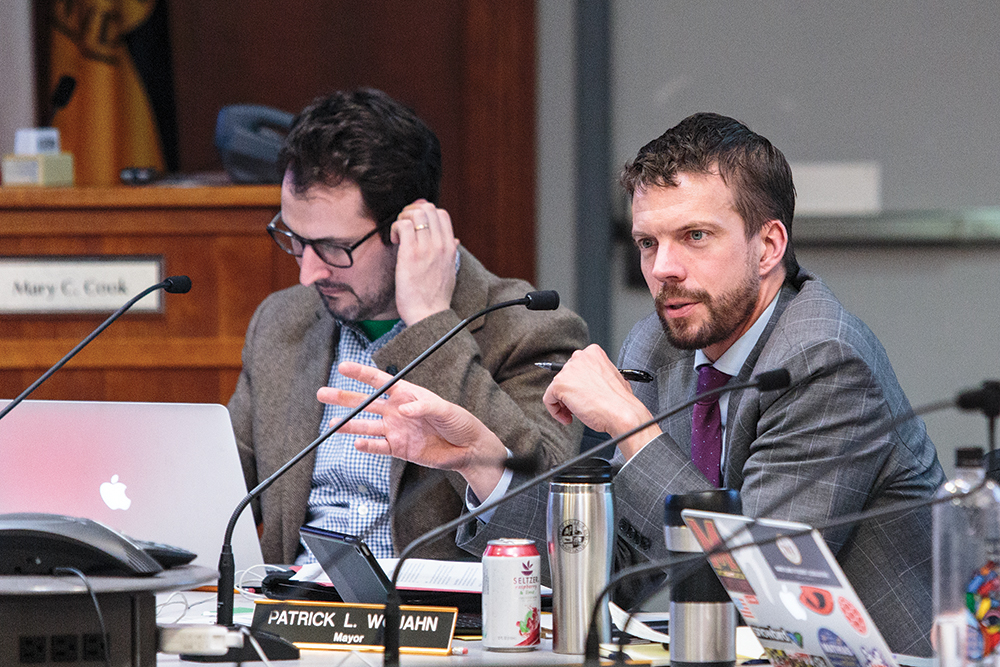After residents of the 5100 block of Kenesaw Street in College Park said too many cars were speeding near their homes, the City Council voted Tuesday night to approve the installation of traffic-calming devices.
The council unanimously agreed on the installation of traffic-calming devices — which encourage safer driving and can also reduce traffic — including speed bumps between 51st Place and 52nd Avenue.
A member of every household on the block signed a petition in June requesting traffic calming on their street, District 1 Councilwoman Christine Nagle said. The petition only needed 60 percent of households located within 500 feet of the requested installation site to sign it to be considered valid.
[Read more: CP mayor says The Hotel is a “game-changer,” but resident traffic concerns remain]
There are 20 to 30 young children who live on Kenesaw Street who walk down the road to reach the bus stop because it has no sidewalks, resident Rachel Ortiz said. All 10 households on the 5100 block signed the petition because they felt the number of speeding vehicles has been increasing in recent years, she said.
“It’s been extremely scary,” Ortiz said.
Resident Kirstin Showalter said Kenesaw Street is one of few in the Daniels Park neighborhood without a speed bump. The road is on a slight hill, so vehicles are able to easily reach speeds above the 30 mph speed limit, she said.
Her husband, Daron Showalter, said vehicles often take Kenesaw Street to get to the College Park Metro Station, as the street only has one stop sign.
“I don’t think any one of you would want to live on a bypass road, especially with little kids,” Showalter said.
In response to the petition, city engineer Steven Halpern conducted a traffic study between August and September, as well as a 48-hour speed and traffic volume study. The street does not have a history of accidents and was not found to have a higher-than-usual amount of traffic or number of vehicles speeding, Halpern said.
[Read more: SHA synced Route 1 traffic lights, removed left turn signal at Knox Road and Route 1]
The city typically installs speed bumps on streets with average daily traffic of more than 500 vehicles, but the 5100 block only had an average of 304 vehicles per day, Halpern said. Only 8.1 percent of vehicles on the street drove at least 5 mph above the speed limit, Halpern said, which is less than the 15 percent threshold for the street to be considered to have a speeding problem.
There were no other reasons found that would prevent a speed bump from being installed on the block, Halpern said.
The traffic calming device will be put in place after Halpern picks a location for it and hires a contractor to install it, Nagle said. This process usually takes one to two months and is funded through the city’s general budget, she added.
“There’s been a lot of input from residents about people speeding and going too fast, not observing stop signs and things like that,” Nagle said.
Some residents have requested additional police presence to enforce traffic laws, she said. The possibility of adding a traffic signal at Rhode Island Avenue and Hollywood Road is also being discussed, she said.
Mayor Patrick Wojahn said officials are working to address resident concerns of both traffic and traffic safety in College Park. The city is working with Prince George’s County and Route 1 developers to minimize traffic and focusing development around metro stations and activity centers.
One challenge the city faces is getting pedestrians to use safe methods of crossing streets, rather than running across. The city’s midtown area has recently seen several accidents, he said, and officials are examining how to improve these conditions.
“The State Highway Administration is working on a rebuild of Route 1 that will make things more walkable, more bikeable,” Wojahn said. “We are starting the process of … building sidewalks in North College Park in many places were sidewalks didn’t exist before.”



